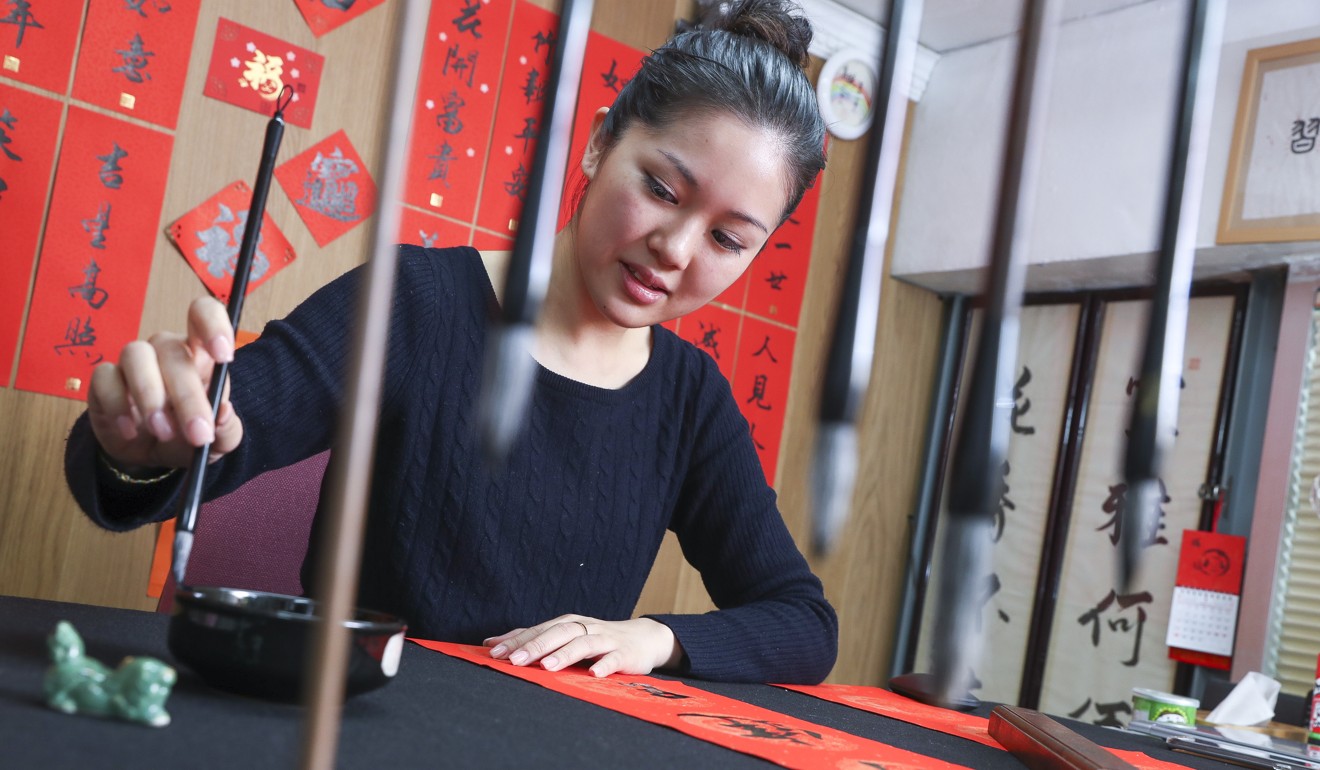
Meet the Hong Kong calligrapher who makes every stroke count for good
A desire to keep the craft alive and accessible fuels the former public relations specialist
When Rita Lee Ka-sin picks up her calligraphy brush soaked with black ink, her full attention shifts to the tip of the writing instrument as she moves with great delicacy to make sure every stroke, curve or dot is perfect.
From lucky festive messages to contrasting couplets, the 26-year-old Hongkonger has produced several thousand Chinese calligraphy posters.
As computer keyboards and electronic devices fast replace conventional writing tools, Lee says good handwriting appears less important and more irrelevant in today’s technological age. To many, having good penmanship may seem somewhat old-fashioned and outdated. Yet she insists on putting her brush to paper, one character at a time, to keep the craft alive.

More than revisiting the basics, Lee is passing on the tradition of Chinese calligraphy for a good cause. The freelancer now sells her works for charity while instructing children and adults at her studio called Keep Calm and Practise Writing.
“All the money I make from the calligraphy key chains goes straight to local charities and it’s a different organisation every time,” she says.
Just last month, Lee made a payment of more than HK$1,500 (US$192) to the Children’s Cancer Foundation, inspired by a friend who suffered from cancer and died last year.
Having worked in public relations for two years and being exposed to an immense amount of garbage that people generate, she soon concluded that her industry was wasteful.
Taiwan master offers handwriting with a human touch
“Our job is to train others to continuously consume unnecessary things that are just eye-catching,” she explains. “Our society is always persuading others that newer is better, while there are those who are fighting to have just the basic daily essentials needed to survive.”
Seeing what she deemed an unfair allocation of resources, she decided to give back to society.
“I know it’s not a sufficiently large amount of money, but I know I am making a difference and that is the message I want to spread with my actions.”
From killer to calligrapher, a Hong Kong artist’s dark journey
Her determination to study Chinese calligraphy percolated from an extracurricular course her mother enrolled her in back when she was in Primary One.
Then, two decades ago, she was practising it under the guidance of master Chinese calligrapher, Fung Siu-wah.
Chinese calligraphy shouldn’t be something only the well educated or the upper class can enjoy
“Chinese calligraphy classes were different than school classes. There was no examination, no work to bring home, so I developed a keen interest to learn,” Lee recalls.
That is exactly what she wants for her students: coaching with a human touch.
“Chinese calligraphy shouldn’t be something only the well educated or upper class can enjoy. I don’t want it to become a burden that they have to learn it well because they’re paying a fortune. I am not teaching to make a living so why not charge less so they can develop an interest?”
With that simple mission in mind, her students are enjoying training at a low cost.
In passing on what she knows and loves, Lee covers five basic script categories of Chinese calligraphy: clerical, seal, running, cursive and regular.
Her dynamic style of writing has graced billboards across the city and been displayed on advertisements. And Lee humbly suggests that what she produces comes from remaining calm and silent as a way of life.
“It’s very satisfying to see my work out there,” she concedes. “Not because my works have become recognisable, but the fact that I am somehow making a difference in the community, one stroke at a time.”

